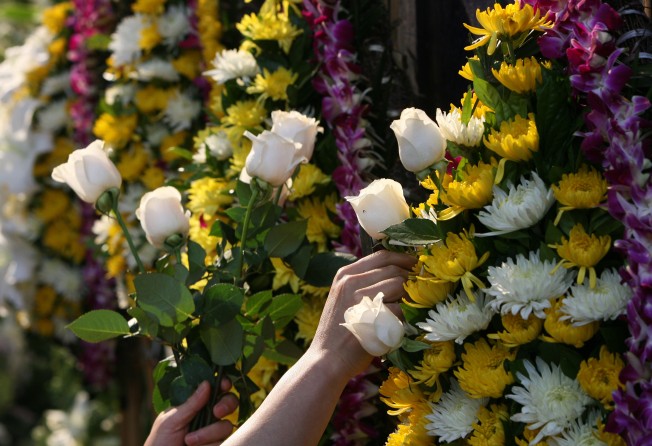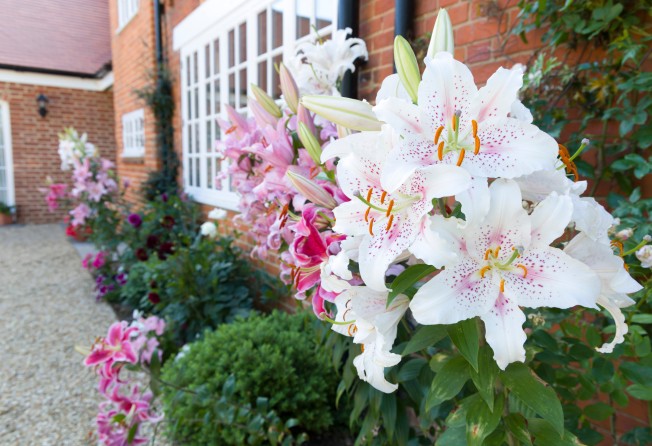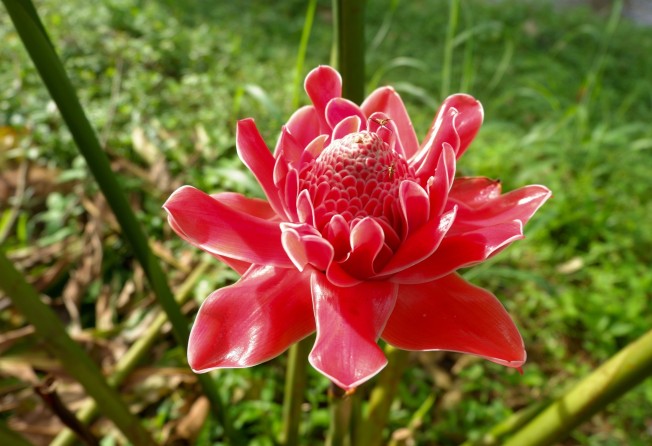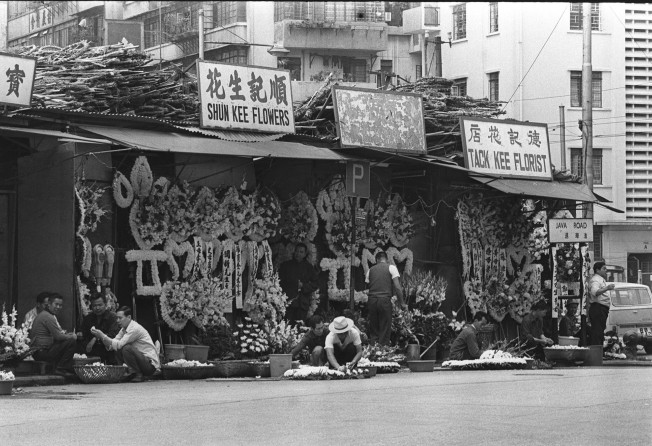
Chrysanthemums, Oriental lilies, frangipani, ginger blossom – how certain flowers became associated with death, and thus bad luck, in East Asia
- At a time when crude injections with preservatives merely helped slow the decomposition of bodies, heavily scented flowers were used to mask the smell of death
- In Hong Kong, such flowers, being associated with funerals, evoke superstitious responses – a fact new arrivals needed to learn to avoid a social misstep

Happy Valley’s historic Colonial Cemetery chapel, built in 1845 – Hong Kong’s oldest surviving British-era structure – contains a little-noticed relic that recalls the building’s original function.
An anteroom where the coffin was kept overnight, before early morning committal ceremonies, has heavy metal mesh ventilation grates set into the walls below the windows. Constant cross-draughts through the room – even when otherwise closed up – helped slow the corpse’s decay in hot weather; a practical reminder of earlier times.
The American funeral industry’s consumerist excesses – in particular, elaborate embalming techniques – all wonderfully eviscerated in Evelyn Waugh’s novel The Loved One (1948) and Jessica Mitford’s satirical, journalistic exposé The American Way of Death (1963), did not reach Hong Kong until recent decades.
Local embalming standards were primitive by comparison; crude injections with formalin, formaldehyde and other preservatives merely helped slow decomposition; when aided by refrigeration, funerals could be delayed for a few days.

Along with the post-war introduction of scheduled long-range air services, these innovations meant travel to Hong Kong for funerals was possible – for those who could afford it.
In the interwar years, an extensive floriculture industry developed in New Territories farming areas that new roads, or the Kowloon-Canton Railway, had made more accessible, with flowers destined for Hong Kong’s funeral industry.

Vast quantities of chrysanthemums – mostly white, the traditional colour of Chinese mourning – were used for wreaths and flower signs. Heavily fragrant Oriental lily cultivars would be used in proximity to the corpse.
During open-coffin funerals – the Roman Catholic preference, in particular – an exposed corpse treated with chemical preservatives certainly smelt like it. Ginger blossom, Oriental lilies and other highly fragrant flowers, when placed around the body, thickly bunched in vases, and arranged on wreaths propped on standing easels nearby, helped mask the unmistakable whiff of bodily decay.
Evergreen and deciduous frangipani varieties were extensively grown across maritime Asia for centuries. Initially established in Hindu graveyards scattered from India to Java and Bali, these trees continued to be planted in Muslim burial grounds after Islamic dominance spread across Southeast Asia.

From the 17th century, emergent Portuguese communities in Goa, Malacca and elsewhere planted frangipani in newly established Catholic cemeteries. The custom spread to Macau and crossed the Pearl River estuary to Hong Kong with early Portuguese settlers.
Frangipani served a similar purpose for previous generations as Oriental lilies and ginger blossom. While their individual scents partially disguised the odours of death, these flowers, and their distinctive fragrances, inevitably evoked painful memories of past funerals and mourning rituals.
Not unnaturally, these flowers became ever-present reminders of past grief and loss, and were avoided as pungently unwelcome reminders of sad times that were better forgotten.

Smell is one of the strongest and most lasting associations in the human memory; partly for this reason, many people cannot bear the odour of Oriental lilies or ginger blossom, and refuse to have them at home.
Funereal associations of certain flowers also evoke superstitious responses, and they are regarded as bad luck – if not an actual invocation to death – if given to the living, especially when they are sick.
Probably my earliest serious Chinese social faux pas in Hong Kong occurred soon after coming to live here, when a close friend’s elderly grandmother, whom I knew slightly and who had always been nice to me, was admitted to hospital.

A bunch of flowers as a get-well-soon gesture from my childhood was always acceptable to hospital patients – or so I fondly thought. My well-presented bouquet of white chrysanthemums was met with a forced smile, and no doubt went straight into the nearest bin as soon as we left.
Mortified when my friend quietly explained this most inappropriate of floral choices, and kindly forgiven as the well-intended gesture of someone who clearly knew no better, that particular cultural lesson was never forgotten.